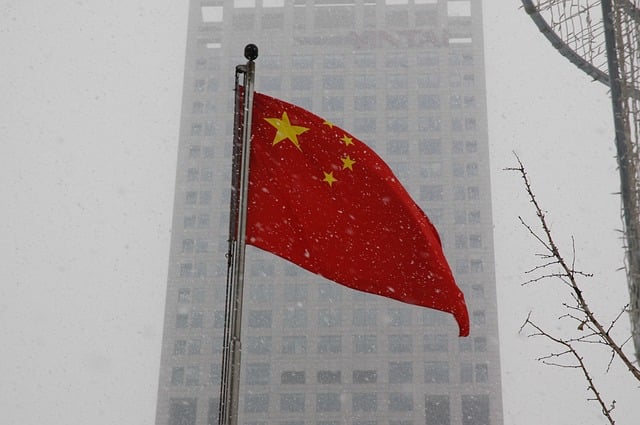Can US Electronics Contract Manufacturers Handle the China Tariffs?
It’s too early to tell with certainty how U.S. tariffs on Chinese goods implemented in 2018 will truly affect U.S. electronics contract...
6 min read
 Matric Group
:
Jul 03, 2025
Matric Group
:
Jul 03, 2025
.jpg?width=788&height=443&name=iStock-1373244125%20(2).jpg)
NOTE: This article was updated on July 3, 2025 to reflect recent information regarding tariffs.
The tariff tables have turned — again. If your designs depend on Chinese components, your cost projections may already be out of date.
Tariffs on electronics from China are once again reshaping the landscape for U.S. manufacturers. In 2025, the Trump administration revived aggressive trade tactics — including steep import duties aimed at reducing reliance on Chinese supply chains.
For supply chain managers and procurement professionals, the pressure is on. These tariffs are already impacting your daily operations, dictating design choices, and forcing strategic sourcing shifts. Your ability to understand and navigate these implications is now central to maintaining continuity, competitiveness, and product compliance.
The tariffs may sting, but they could be the push your team needs to build a stronger, more resilient supply chain. Below, we’ll explore the current landscape, identify the most affected electronics categories, and offer strategic insights to safeguard your supply chain and margins.
As of June 2025, the U.S. government has sweeping tariffs on a wide range of Chinese imports, including a broad spectrum of electronics. Tariff rates on these products now commonly fall between 10% and 40%, depending on classification, and are part of a broader campaign to stimulate domestic manufacturing, reinforce trade leverage, and respond to long-standing intellectual property concerns.
While a temporary 90-day truce announced on May 12, 2025, reduced tariffs on certain goods, key electronic products and components remain squarely in the crosshairs. The agreement expires in August, and there’s strong potential for another escalation.
At the same time, importers face increased customs scrutiny, more frequent documentation checks, and abrupt classification shifts, all of which complicate planning and execution.
Because of this, companies are experiencing:
These conditions have made long-term forecasting increasingly difficult and forced many firms to rethink how they import electronics from China to the U.S.
The list of tariffed goods is extensive, but some categories stand out for their outsized impact on electronics manufacturing:
Tariffs on rigid and flex PCBs sourced from China typically range from 25% to 30%. This means higher costs for prototyping and production alike, complicating budgeting during early-stage design and putting pressure on already tight development cycles.
Passive components like resistors, capacitors, and inductors — as well as active components such as voltage regulators and logic devices — are all impacted. This creates a volatile pricing environment that makes locking in BOM costs during the design phase more difficult. Semiconductors, for example, have seen tariffs increase to 50% in 2025.
Complex items like HMIs (human-machine interfaces), power supplies, displays, and control boards are particularly vulnerable to tariffs because of their hybrid construction. These assemblies often combine electrical and mechanical components, which can trigger multiple tariffs based on how each part is classified, leading to higher costs and disputes over import duties.
In 2025, tariffs are proving to be a profound destabilizing force, deeply affecting engineering, procurement, and production operations.
Key impacts include:
These conditions demand a deeper awareness of material selection, stack-up design, and component footprints. Cost now goes hand-in-hand with country-of-origin risk, and managing that equation requires tighter coordination between engineering, sourcing, and compliance teams.
Tariffs on electronics from China can feel like a moving target. While policy may shift, the best defense remains a proactive, layered strategy. Below are high-impact methods to reduce both financial risk and operational disruption.
Overdependence on Chinese manufacturing exposes your supply chain to both tariff volatility and geopolitical risk. A growing number of electronics firms are adopting “China+1” sourcing models, where they supplement Chinese production with suppliers in countries like:
Though these regions may not yet match the scale of Chinese electronics companies, they are increasingly competitive in price and quality for key product types. Companies should use origin tracing and sourcing audits to verify where each component and subcomponent is produced, especially when classifying electronic goods from China.
Foreign-Trade Zones (FTZs) and bonded warehouses are essential tools in tariff timing and cash flow optimization. Benefits include the ability to:
This approach is particularly valuable when importing electronics to the USA for seasonal or uncertain demand forecasts.
Through tariff engineering, you can make legal, strategic modifications that reduce your product’s dutiable value:
Always consult customs experts to ensure compliance. Small changes in structure or packaging can convert a 25% tariff into a 5% duty, or none at all.
Navigate Compliance and Tariff Risk With ConfidenceUnderstanding how to navigate shifting trade regulations is critical to protecting your margins and supply chain integrity. Our free Electronics Manufacturing Compliance & Standards Guide breaks down everything you need to know so you can make confident, compliant sourcing decisions in 2025 and beyond. Download the guide today: |
The HTS code you apply directly determines duty rates. But misclassifications are common — and costly.
Don’t stress – there are steps you can take:
Proper HTS reclassification can lead to significant savings or refund claims if there’s an error. For example, reclassifying a power module as a subcomponent instead of a finished control unit could lower the duty rate from 25% to 8%.
Build engineering and sourcing strategies that can adapt to tariff changes:
These practices minimize time-to-market delays from sudden tariff hikes or unexpected component shortages.
In some cases, importing bare PCBs or semi-finished subassemblies and completing assembly or testing in the U.S. or Mexico can significantly reduce the import duty on electronics from China.
While domestic labor may cost more, the duty savings and reduced customs risk can make this approach financially viable, particularly in sensitive product categories, like PCBs, power management systems, and medical device subassemblies.
Collaborate with electronics manufacturing services (EMS) partners that:
Top-tier EMS partners often qualify for tariff exemptions and can reroute production quickly to reduce your exposure to extra taxes.
Tariffs are just one part of the risk landscape. To fully protect your supply chain:
These practices help build long-term stability, even as policy changes continue unfolding.
The Trump administration has made it clear that tariffs are not a short-term tactic, but part of a long-term strategy to boost domestic manufacturing. While this may benefit U.S.-based EMS providers over time, short-term volatility is likely to persist.
Expected developments include:
For electronics professionals, these changes emphasize the need for proactive sourcing, modular design, and flexible supplier networks. The ground is shifting, and those who can move with it will avoid the aftershocks.
The current tariff environment reinforces a key principle: Both sourcing and engineering decisions impact business outcomes.
Designing with trade constraints in mind can help you:
The takeaway? Treat tariff exposure like any engineering constraint. It can be mitigated — just like thermal limits, power budgets, or regulatory certifications — with planning, tools, and foresight.
Tariffs on electronics from China directly threaten your profit margins, production timelines, and competitive edge. Every component decision you make today has downstream consequences, especially in an environment where trade rules can change overnight.
The good news? You hold the keys to transforming this challenge into an opportunity. By planning well ahead, distributing risk intelligently, and fostering supplier agility, you can ensure your business thrives, regardless of future tariff levels.
If you’re already grappling with tariffs, chances are you're also battling unpredictable lead times, aging components, and shrinking vendor lists. That’s where aftermarket support becomes a lifeline.
Partnering with an electronics manufacturer that offers full life cycle services — from repair and component tracking to inventory planning and obsolescence management — puts you in control of your supply chain. It turns reactive scrambling into proactive stability.
Let’s talk about how aftermarket support can protect your supply chain — and your bottom line:

It’s too early to tell with certainty how U.S. tariffs on Chinese goods implemented in 2018 will truly affect U.S. electronics contract...

If there's anything certain in the U.S.-China tariffs staredown, it's uncertainty.

Conflict minerals are both a vital component (no pun intended) of the electronics industry and at the same time one of its biggest headaches. Since...